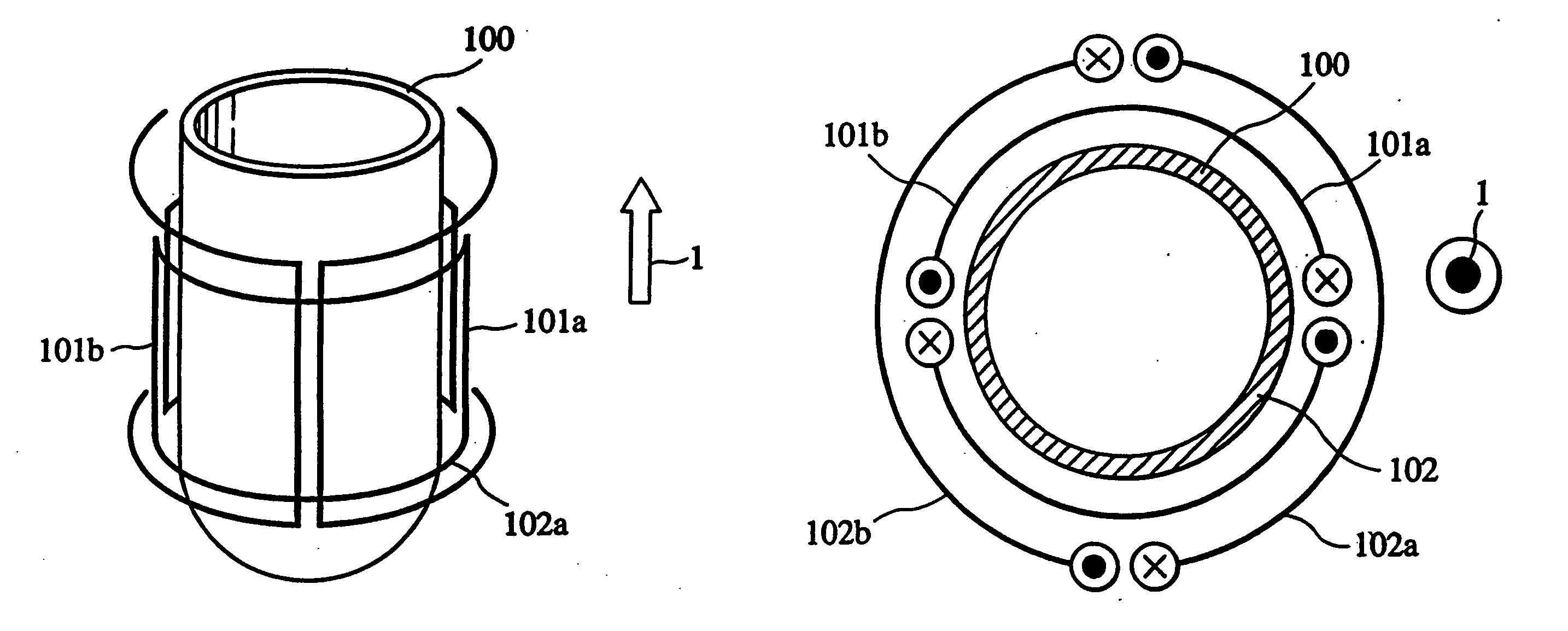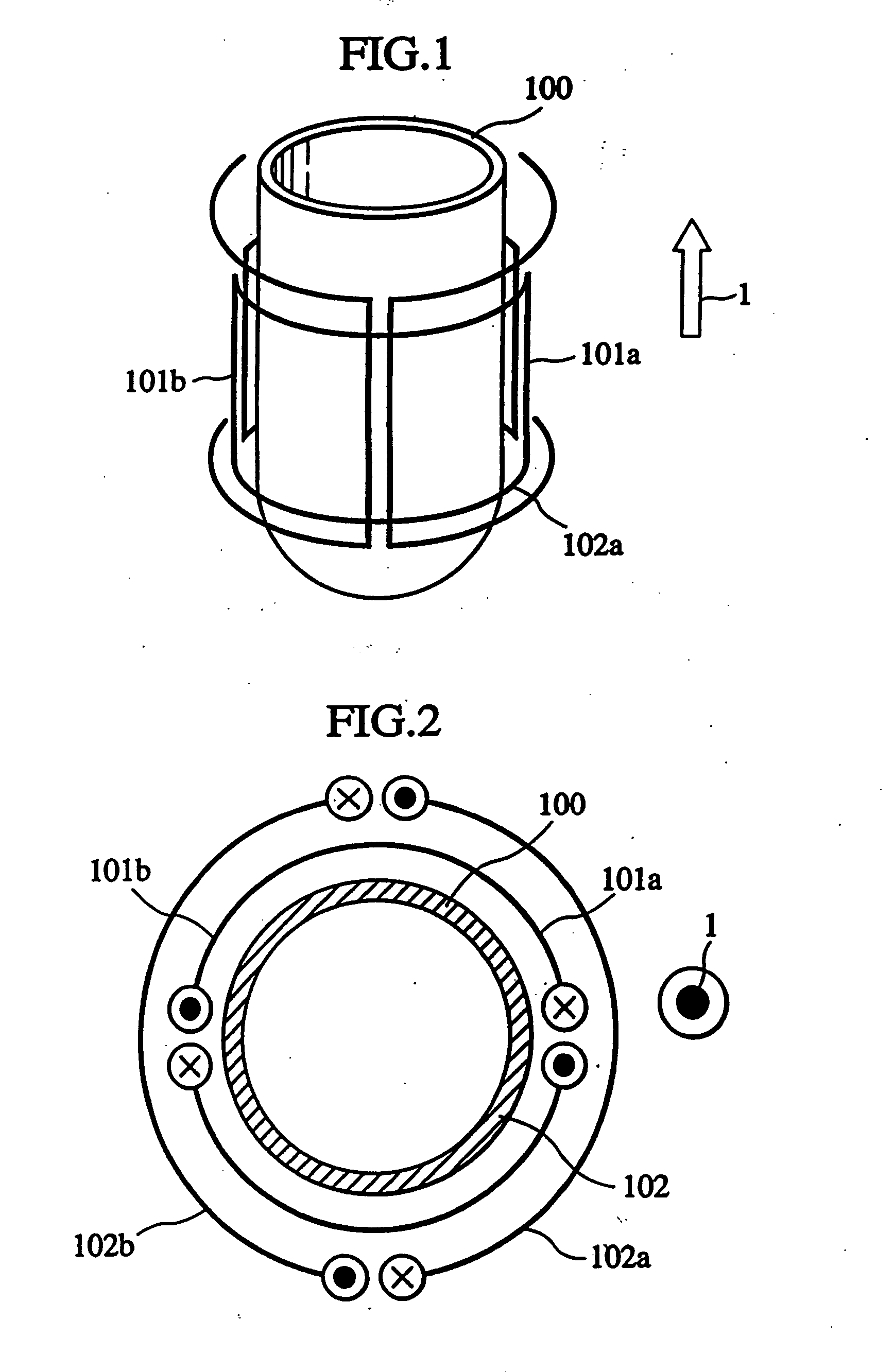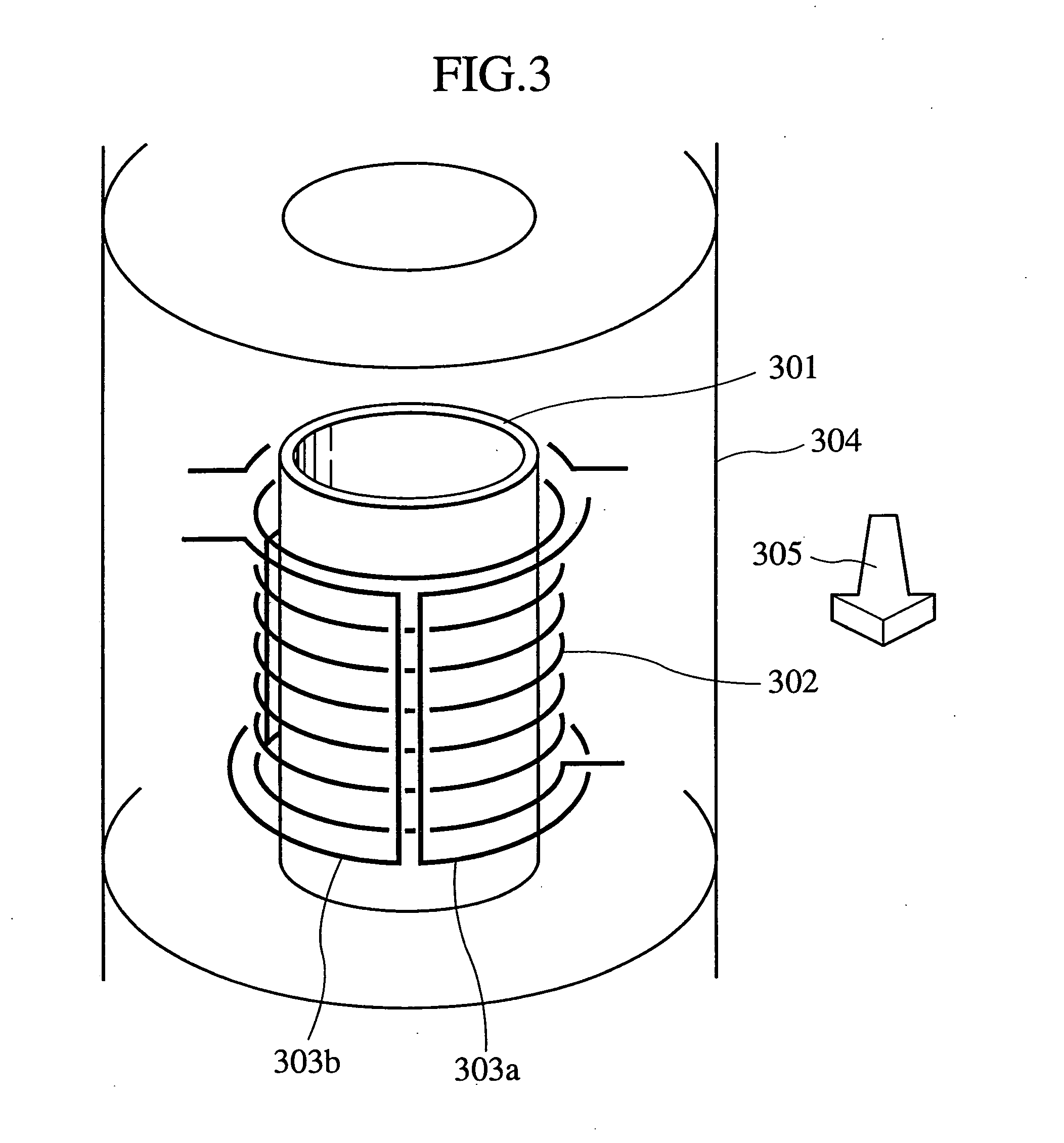Nuclear magnetic resonance apparatus probe
a nuclear magnetic resonance and apparatus technology, applied in the field of nuclear magnetic resonance apparatus probes, can solve the problems of multiple resonance, resonating frequency, and difficulty in installing a plurality of coils to permit simultaneous measurement of different nuclides, and achieve the effects of increasing q-value, high sensitivity, and small resistance of the probe coil
- Summary
- Abstract
- Description
- Claims
- Application Information
AI Technical Summary
Benefits of technology
Problems solved by technology
Method used
Image
Examples
embodiment 1
[0029] (Embodiment 1)
[0030]FIG. 3 shows a first embodiment according to the present invention. FIG. 3 is a structural view showing an area near a probe coil of a nuclear magnetic resonance apparatus probe according to the present invention. It shows a principal point of the present invention.
[0031] A bobbin 301 is of a cylindrical shape, for which special glass having a relative permeability of a value close to 1 is used as a material thereof. The bobbin 301 has a structure that allows a sample tube containing therein a sample to be inserted therein. It is important that the bobbin 301 be made of a material that does not emit a nuclear magnetic resonance signal, since it is disposed inside a solenoid coil 302. Although no specific material is named as long as the material does not emit the nuclear magnetic resonance signal, it is desirable that glass or the like be used for reasons of ease of manufacture. In addition, since it is necessary to ensure that a homogeneous static magnet...
embodiment 2
[0034] (Embodiment 2)
[0035]FIG. 8 shows a second embodiment according to the present invention. FIG. 8 is a structural view showing an area near a probe coil of a nuclear magnetic resonance apparatus probe according to the present invention. It shows a principal point of the present invention.
[0036] Embodiment 2 has substantially the same construction as that of embodiment 1, except that, since capacitance-variable capacitors 801a, 801b are built into the solenoid coil 302 and the saddle type coils 303a, 303b of the probe, the resonance frequency can be adjusted by adjusting these capacitors. It is possible to vary the resonance frequency by not only adjusting the capacitance component, but also adjusting an inductance component. Moreover, it is possible to vary the Q-value by adjusting a resistance component. The resonance frequency can therefore be varied by inserting element parts having the capacitance component, inductance component, and resistance component, respectively, in ...
embodiment 3
[0037] (Embodiment 3)
[0038] A third embodiment according to the present invention will be explained in the following. The construction of an area near a probe coil of a nuclear magnetic resonance probe according to embodiment 3 is exactly the same as that of embodiment 1 shown in FIG. 3. A block diagram showing the probe built into a nuclear magnetic resonance apparatus is shown in a block diagram (FIG. 4) for embodiment 1. It goes without saying that a block diagram (FIG. 5) for embodiment 2 may still be perfectly all right for serving the purpose. Embodiment 3 is characterized in that a superconductor is used in part or all of the solenoid coil 302 and the saddle type coils 303a, 303b.
[0039] There are two specific benefits involved in using a superconductor for a coil conductor. First, it improves the Q-value. As shown in equation 2 noted earlier, the Q-value is inversely proportional to an electrical resistance R in a circuit. The Q-value can therefore be improved by using a sup...
PUM
| Property | Measurement | Unit |
|---|---|---|
| inductance | aaaaa | aaaaa |
| axial length | aaaaa | aaaaa |
| diameter | aaaaa | aaaaa |
Abstract
Description
Claims
Application Information
 Login to View More
Login to View More - R&D
- Intellectual Property
- Life Sciences
- Materials
- Tech Scout
- Unparalleled Data Quality
- Higher Quality Content
- 60% Fewer Hallucinations
Browse by: Latest US Patents, China's latest patents, Technical Efficacy Thesaurus, Application Domain, Technology Topic, Popular Technical Reports.
© 2025 PatSnap. All rights reserved.Legal|Privacy policy|Modern Slavery Act Transparency Statement|Sitemap|About US| Contact US: help@patsnap.com



